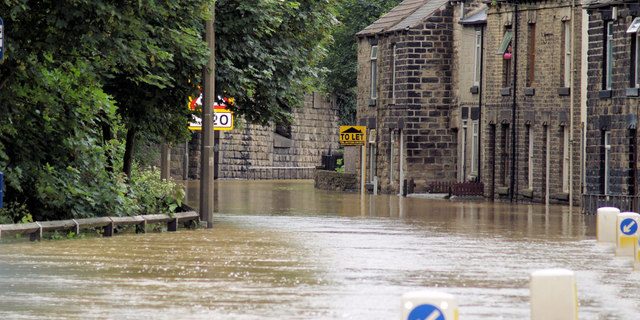Number of homes built on flood plains could rise 50%
Flooding puts people’s homes, well-being and livelihoods at risk, and can impact food supply and destroy natural habitats, the Public Accounts Committee has warned. More extreme weather as a result of climate change and increased housing development will continue to increase the UK’s flood risks.
The impacts of climate change can already be seen in the increasing strain on existing flood defences. Only half of the defences damaged in the 2019-20 winter floods have had their standard of protection restored. Defra has not addressed the problem of prohibitive insurance costs imposed on the recently flooded or removed the obstacles to households taking up their own flood resilience measures.
Despite the obvious risks, and a government policy not to build on flood plains “unless unavoidable”, the Environment Agency (EA) thinks there could be an increase of up to 50% in the number of houses built on flood plains over the next 50 years.
EA is working with MHCLG on the planning reforms needed to mitigate the risk of building in these areas but responsibility for surface water flooding, worsened by developments in urban areas, sits with the local authority. Scarce local authority resources, now under further extreme strain from the pandemic, and low levels of private sector investment are hampering England’s flooding response.
The Committee says neither Defra nor the EA understand enough about the significant decline in the proportion of flood investment going to deprived areas since 2014, or about the wide variation in the level of flood defence investment per property at risk across regions.
The current indicators used to monitor national flood risk do not cover important elements such as risks to agricultural land, business premises, and infrastructure; short-term funding cycles are impacting on EA’s ability to manage flood risks effectively.
EA is set to achieve its target to better protect 300,000 homes through its capital investment programme on time and budget, which is a significant achievement. However, Defra should recognise that with new build on the flood plain and increased vulnerability to existing properties from climate change, the net number of homes that are better protected is actually lower.
With the level of investment due to increase significantly over the next six years, Defra needs to monitor and challenge EA’s performance and get a better understanding of whether funding to each local authority matches the level of flood risk it faces.
Meg Hillier MP, Chair of the Public Accounts Committee, said: “Damaging floods are becoming more and more frequent and with climate change extreme flooding events are not going to just go away. With public finances stretched to the limit, Government and the Environment Agency have to do more to make sure limited funds for flood defence and risk management are spent effectively. The risks to our homes, businesses, national infrastructure, food supply and whole ecosystems are not even being properly monitored, much less strategically mitigated.
“You can see the next major housing and building regulations scandal brewing here – the Government is simply not doing enough to protect the UK’s current housing stock from floods or stepping in to prevent new homes being built on flood plains, and more needs to be done to tackle the prohibitive home insurance costs that result.”
Source: Show House News













